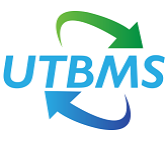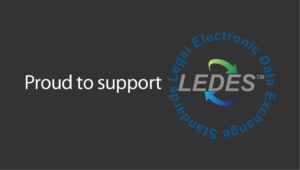August 2017 Update –
It is our understanding that as the judiciaries of England and Wales move ahead with the electronic form bill of costs, it is no longer required that attorneys use the J-Code task and activity codes when recording their time or in the new model form bill-of-costs itself (the nBOC). HOWEVER attorneys are required to use the hierarchy established in the J-Codes (in other words, use the J-Code task and activity code headings) in the nBOC, or use an alternate time categorization system for litigation in England and Wales in the nBOC that is permissible by the court, in the same way as the J-Codes are and that it is at least as good as the J-Codes. The J-Codes are inherently permissible, being drafted by the judiciaries own Hutton Committee in collaboration with the LOC and authorized by three leading judges.
While firms can establish their own code numbering schema using the J-Code hierarchy, THEY MUST ALSO provide a worksheet in the electronic form bill of costs that translates the codes used into the headings.
The LEDES Oversight Committee recommends that firms simply use the J-Codes as elaborated below, as most firms will be familiar with the phases and tasks and also using UTBMS codes when recording their time.
More on the timescale for mandatory use of the nBOC: Our last information is that the usage of the nBOC was to become mandatory at the beginning of October 2017 and it will need to be used for all work done after that date. However, it is also understood that the Ministry of Justice (MoJ) have advised it to become mandatory beginning 06 April 2018 (to allow for the mandatory use of the nBOC in county courts as well as high court). Given this, we advise firms to check for themselves on the go-live ‘mandatory use of the nBOC’ date.
Irrespective of the actual go-live date of the nBOC, it is going to happen soon. It would be prudent for law firms to consider implementing the J-Codes or an alternative but equal system as soon as possible, so that time is recorded using appropriate task and activity codes, which will in turn enable the easier production of the nBOC at the close of the case when it will be required (assuming of course, the case is won). This will then wield the advantages of the nBOC in terms of time and cost savings in its production.
Law firms are encouraged to find out more about the new model form bill of costs for themselves. Please visit the judiciaries website for official information before making any decisions.
————————————————————————————————————————————-
In 2014, the LEDES Oversight Committee (“LOC”) endorsed the UTBMS Litigation Code-set for use in England and Wales – the EW-UTBMS J-Code-set.
The J-Codes are a set of UTBMS codes developed by the Jackson Steering Committee, working at the behest of the Judiciary of England and Wales, and charged with developing a set of litigation task codes specifically for their own region and industry sector. In this case, the LOC assisted the Jackson Steering Committee (chaired by Alex Hutton QC and project coordinated by David Nelson who is the LOC Standards Coordinator) in developing the J-Codes, as the first stage of their objective to develop a new model-form ‘Bill-of-Costs’ for use by the courts in assessing costs to be awarded in litigation cases.
The development of the J-Codes (and the new model-form-bill-of-costs when it is developed), is a response to a review of civil litigation costs in England and Wales, conducted by Lord Justice Jackson (a very senior judge in the judiciary). The overarching purpose of these codes is to assist courts and other parties in performing analysis of costs at different levels, including the comparison of actual costs to budgeted costs.
Given the above, the primary aim of the new J-Codes is to enable the courts in England and Wales – including Judges and Costs’ Judges – to summarise and analyse time worked and costs incurred by lawyers during a litigation case. This again is a departure from the norm for the use UTBMS codes, as normally they are used in eBills supplied by the law firm to the client. It’s envisaged the J-Codes will be used extensively to analyse the Bill-of-Costs by the losing litigant, in order to minimize their costs.
In terms of implementation – law firms should liaise with their clients to receive instructions, but it is thought law firms with litigation cases being held in the jurisdiction of England and Wales will need to implement the new J-Code-set internally, so that their lawyers are able to record time using the J-Codes. This should be an improvement over the current –L-Codes which they may be using, as the J-Codes accurately reflect the litigation phases in this jurisdiction. Likewise, eBilling vendors will need to implement the new J-Codes, as the law firms will need to record them, and this will enable an easier comparison of client bills to the eventual Bill-of-Costs presented to the courts at the culmination of the case.
The request to the LOC to ratify/endorse the J-Codes was made via a formal letter to the LOC by senior judges in England and Wales, these being Lord Dyson (Master of the Rolls – the 2nd head judge in the country), Lord Justice Jackson (Senior Judge and author of the Jackson Review report), Senior Costs Judge Peter Hurst (Senior Costs Judge in the Judiciary). This underlines the importance of using the codes in litigation cases in England and Wales.
There are two pdf documents regarding the J-Codes,
- Jackson Review – UTBMS LitCode Revision – EW-UTBMS J-Code Documentation and Guidelines v5.21 – this is the main guideline document that provides the details of the J-Codes
- Jackson Reforms J Code Letter 300714 – this is a letter from the Judiciary of England and Wales requesting LOC ratification/endorsement.
If you have any queries or comments, please email the LOC using the Contact UTBMS option.
(Documentation reproduced with permission of the Jackson Steering Committee)
Additional information 11 September 2014:
The Association of Cost Lawyers has published an article on the endorsement of the J-Codes by the LEDES Oversight Committee. The article can be found here.

